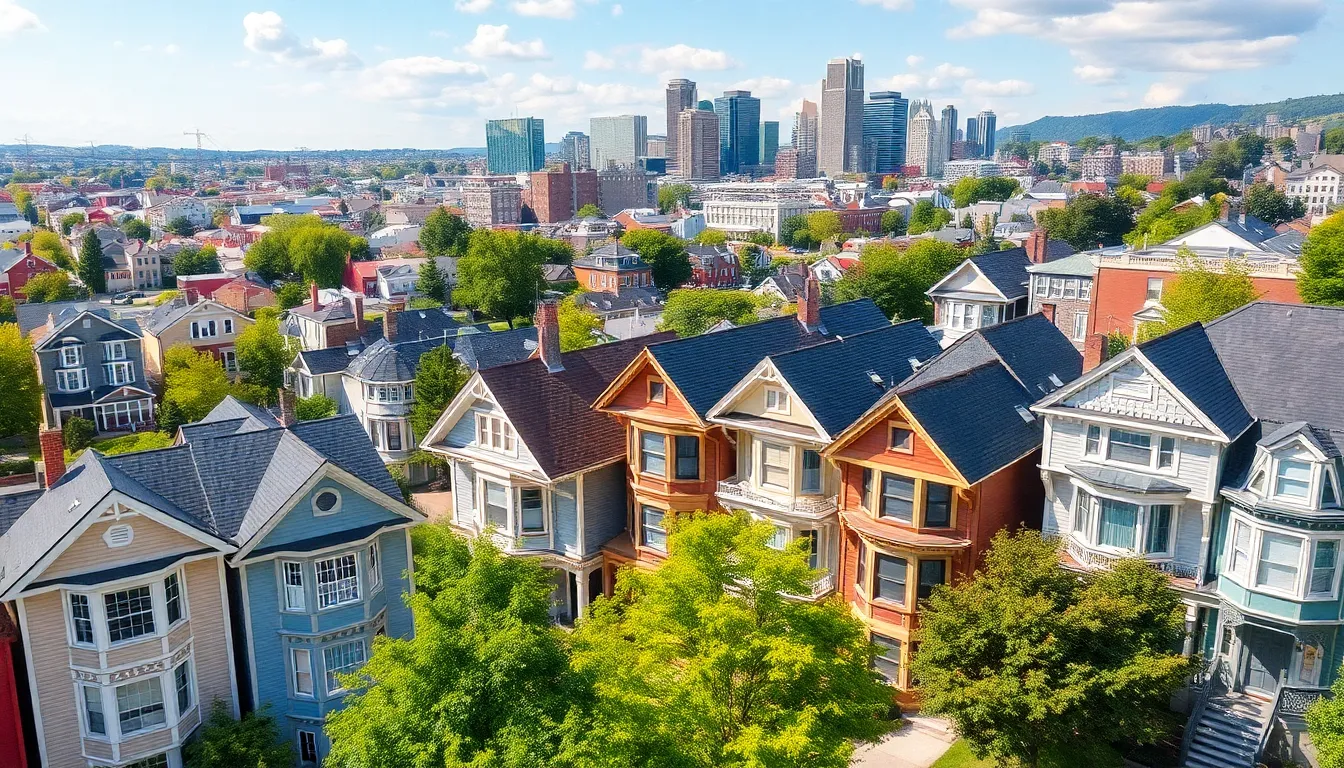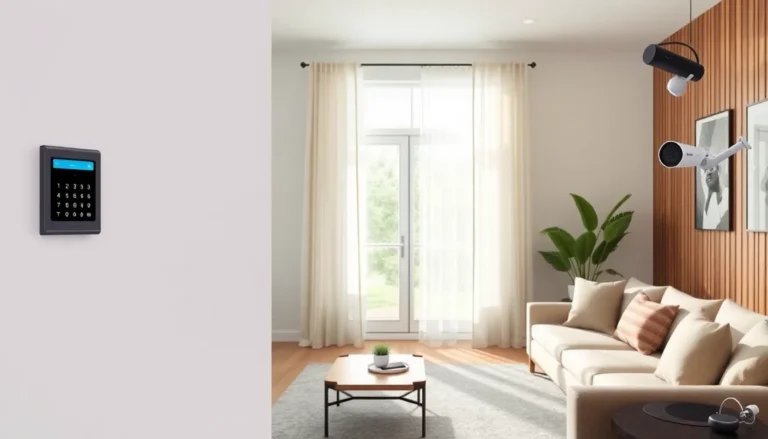Pittsburgh’s real estate market is like a box of chocolates—full of surprises and just as sweet. With a unique blend of historic charm and modern flair, this city has become a hotbed for savvy investors and first-time homebuyers alike. Whether it’s the allure of a cozy brownstone or a sleek downtown loft, Pittsburgh’s neighborhoods have something for everyone.
Table of Contents
ToggleOverview of Pittsburgh Real Estate Trends
Pittsburgh’s real estate market remains dynamic, showcasing a mix of historic and contemporary aesthetics. Increased demand for urban living fuels the interest in various neighborhoods, with areas like Lawrenceville and East Liberty seeing significant growth. Buyers often seek properties that combine modern amenities with architectural charm, appealing to a diverse demographic.
Recent data indicates that home prices in Pittsburgh increased by 5% in the last year. The median home price sits around $230,000, making it relatively affordable compared to national averages. Residential properties in high-demand neighborhoods often experience multiple offers, highlighting the competitive nature of the market.
Rental trends also reflect growth, with an average rent of $1,400 for apartments in sought-after districts. This increase stems from an influx of young professionals and university students drawn to city life. Investors find opportunities in both single-family homes and multi-family units, enhancing their portfolios with lucrative rental options.
Real estate development projects play a crucial role in addressing the rising demand for housing. Rehabilitations of older buildings and new constructions contribute to maintaining the market’s vibrancy. Neighborhood revitalization efforts foster community engagement and attract further investment.
Interest rates currently influence purchasing power, with low rates encouraging first-time buyers. This trend creates a sense of urgency among home shoppers, who are eager to capitalize on favorable borrowing conditions. As Pittsburgh continues to evolve, the real estate landscape adapts, offering unique opportunities for those looking to reside in or invest in the area.
Current Market Analysis

Pittsburgh’s real estate market continues to demonstrate resilience amid evolving trends. Key areas are experiencing noteworthy shifts that reflect housing demands.
Home Prices in Pittsburgh
Home prices in Pittsburgh have increased by 5% over the past year. The median home price stands at approximately $230,000, presenting an attractive option for buyers. Numerous neighborhoods, such as Lawrenceville and East Liberty, showcase a variety of homes, appealing to both investors and first-time buyers. Comparatively, this price remains affordable against national averages, drawing attention from those seeking value in real estate investment.
Rental Market Overview
The rental market in Pittsburgh exhibits similar positive momentum. Average rents now reach $1,400 for apartments in sought-after areas, fueled by the influx of young professionals and university students. Demand remains strong, with many investors targeting both single-family homes and multi-unit properties. Competitive pricing in rental units enhances opportunities for property owners, establishing a vibrant rental landscape in the city.
Factors Influencing Real Estate Trends
Pittsburgh’s real estate market is shaped by various factors that drive housing trends. Economic conditions and demographic changes significantly impact the area’s housing landscape.
Economic Impact on Housing
Local economic growth fuels demand in residential markets. The recent rise in home prices, approximately 5% over the past year, reflects this trend. Job creation in tech and healthcare sectors pushes homebuyers toward desirable neighborhoods. Low interest rates further stimulate buying activity. Homebuyers find favorable borrowing conditions, enhancing affordability. In addition, real estate development includes rehabilitating older buildings and constructing new properties, ensuring the market meets growing demand. Investors capitalize on opportunities within both single-family homes and multi-family units.
Demographic Shifts
Demographic changes play a critical role in shaping housing needs. The influx of young professionals and university students drives demand in urban areas. Neighborhoods like Lawrenceville and East Liberty attract these residents with vibrant lifestyles. More families are also moving to Pittsburgh, seeking affordable options compared to national averages. The median home price of around $230,000 makes homeownership accessible. Similarly, a thriving rental market, with average rents at $1,400, caters to diverse preferences. These demographic shifts collectively influence what types of housing shape Pittsburgh’s real estate trends.
Future Predictions for Pittsburgh Real Estate
Pittsburgh’s real estate market continues to evolve, shaped by emerging neighborhoods and steady growth patterns. Trends indicate exciting opportunities for buyers and investors alike.
Emerging Neighborhoods
Lawrenceville and East Liberty stand out as noteworthy areas for future development. Both neighborhoods attract young professionals and families seeking vibrant urban living experiences. New businesses open regularly, enhancing local amenities and fostering community interactions. Gentrification in these areas drives demand, leading to diverse housing options, from renovated properties to new constructions. Other neighborhoods, such as the Strip District and Mount Washington, also show potential for increased growth. With home prices remaining competitive, these emerging areas promise significant returns for investors ready to seize opportunities.
Market Stability and Growth
Market stability characterizes Pittsburgh real estate, even in a dynamic economic landscape. Recent data illustrates a consistent rise in home prices, with increases around 5% annually as of 2023. Affordability persists, attracting first-time homebuyers amidst national price surges. Interest rates remaining low contribute to accessibility, enhancing buying power. Rental markets thrive, supported by approximately $1,400 in average rents, appealing to both students and young professionals. Continued investment in infrastructure and community development underscores potential future growth, reinforcing Pittsburgh’s position as a favorable market for real estate transactions.
Pittsburgh’s real estate market is on an impressive trajectory driven by diverse housing options and a growing demand for urban living. With neighborhoods like Lawrenceville and East Liberty leading the charge, the blend of historic charm and modern amenities continues to attract both buyers and investors. The rise in home prices alongside a thriving rental market showcases the city’s appeal, particularly among young professionals and families seeking affordability.
As the market evolves, ongoing investments in infrastructure and community development will further enhance Pittsburgh’s attractiveness. For those looking to navigate this dynamic landscape, ample opportunities abound, promising potential rewards for savvy investors and first-time homebuyers alike.



